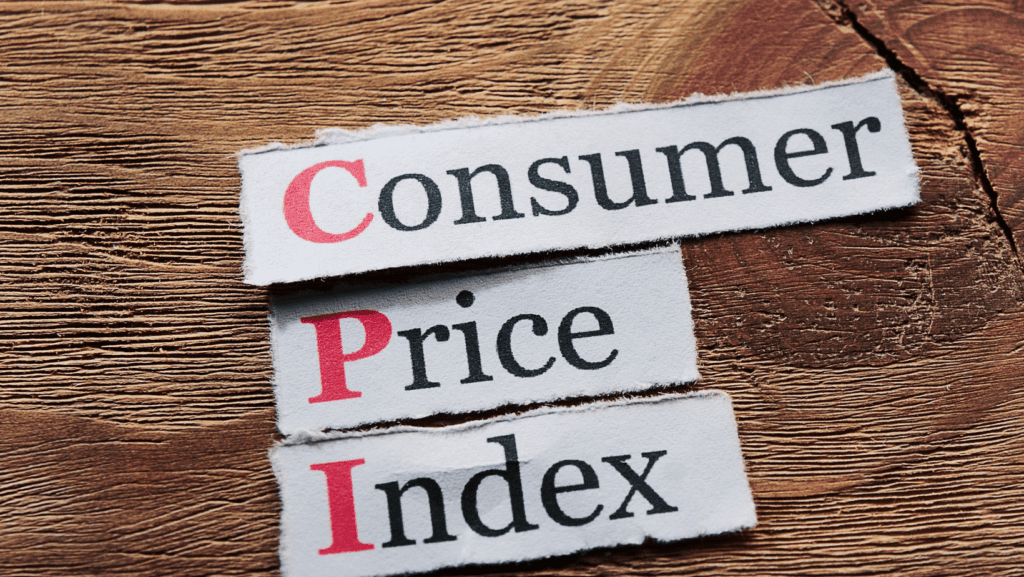
Understanding the economic concepts that shape our daily lives can feel like a daunting task. However, there is a particular indicator that Canadians need to be familiar with, one that directly impacts your pocket and overall financial well-being – the Consumer Price Index, or CPI.
A Closer Look at the Definition of CPI
To grasp how CPI influences our lives, we need to first understand what it is. The Consumer Price Index (CPI) is a measure that estimates the average change in prices paid by consumers for a basket of goods and services over time.
Imagine a virtual shopping basket filled with various items that an average household would typically purchase. This basket doesn’t just contain tangible items like food, clothing, or fuel, but also includes services such as healthcare, education, and even leisure activities like cinema tickets or gym memberships.
Now, picture the cost of this basket at a certain point in time. The CPI measures how the price of this basket changes over time, which can be monthly or yearly. If the price of items in the basket goes up on average, we say that the CPI has increased, indicating inflation. Conversely, if the average price drops, the CPI decreases, signaling deflation.
What Affects CPI?
Let’s dive deeper into what makes the CPI go up or down. Here are some of the major factors:
- Supply and Demand: This is all about how much of a product is available (supply) and how many people want it (demand). If more people want a product than there is available, the price often goes up. On the other hand, if a product is plentiful but not many people want it, its price might go down. Both scenarios can affect the CPI.
- Costs of Making Products: If it costs more to make a product, like when the price of raw materials goes up, then the price of that product will likely go up too. This increase will show up in the CPI.
- What’s Happening in Other Countries: The economic situation in other countries can affect our CPI. For instance, if we buy a lot of products from a country and their economy is struggling, they might increase their prices, which can raise our CPI.
- Government Actions: Changes in government policies or rules can also impact the CPI. For example, if the government decides to increase taxes on businesses, those businesses might raise their prices to cover the extra costs. This could result in a higher CPI.
Each of these factors can cause the CPI to move up or down. By understanding what causes these changes, we can have a better idea of how the cost of living might change and what adjustments we might need to make in our own spending or saving plans.
Why does it matter?
Understanding the CPI is not just for economists or financial gurus – it can have real, tangible effects on our daily lives. Let’s break down what a changing CPI might mean for Canadians.
Impact on our Wallets
When the CPI goes up, it means the average cost of goods and services has increased. In simpler terms, life just got a bit more expensive. As Canadians, we might find ourselves needing to stretch our dollar further to maintain our current lifestyle. It’s like going to your favourite coffee shop and finding out the price of your go-to drink has risen – you’ll need to spend more to enjoy the same thing.
Ripple Effect on the Economy
The CPI doesn’t just affect our personal budgets. It has a domino effect on the broader economy too. For instance, a higher CPI can signal to the Bank of Canada that it’s time to raise interest rates to keep inflation in check. If interest rates go up, so does the cost of borrowing. This could make getting loans or mortgages more expensive.
Making Personal Finance Decisions
The CPI can also influence how we handle our money on an individual level. For instance, if the CPI is rising, it might become more challenging to save money or keep up with non-essential purchases, like those new shoes you’ve been eyeing.
The Future of Your Savings and Investments
Lastly, the CPI can also affect the future of our savings and investments. Here’s how: when the CPI goes up, the value of the money sitting in your savings account effectively goes down. That’s because as prices rise, each dollar you’ve saved can buy less than before. This might encourage some people to invest their money instead of leaving it in a savings account, aiming to get a return that outpaces rising prices.
In conclusion, the CPI isn’t just a number that economists look at. It’s a reflection of how our economy is doing and can guide us in making important decisions about our money. By keeping an eye on the CPI, we can better prepare for future changes and manage our finances more effectively.
4 Effective Ways to Address CPI when it comes to your Financial Situation
The rising Consumer Price Index (CPI) is a reality we all must face, but the good news is, you can take proactive steps to lessen its impact on your daily life and long-term financial goals. Let’s take a deep dive into four effective strategies you can employ to mitigate the impact of rising CPI on your daily life and long-term financial goals:
1. Small Daily Changes: Big Financial Impact
At first glance, the everyday choices we make might seem insignificant, but their impact on our financial health can be substantial. This is particularly true in the face of rising CPI. Let’s consider some easy changes you can incorporate into your daily life:
- Be a Savvy Shopper: Shopping smart can save you a surprising amount of money. Rather than automatically reaching for name-brand items, why not give generic brands a try? Often, they offer the same quality at a fraction of the cost.
- Wait for Sales: It might be tempting to grab that new book or gadget as soon as it hits the shelves, but waiting for a sale can lead to significant savings. Be patient and let your wallet thank you later.
- Plan Your Meals: Impromptu takeouts and last-minute grocery runs can add up quickly. Instead, plan your meals for the week, make a shopping list and stick to it. You’d be surprised how much you can save.
- Grow Your Food: If you have space, start a small vegetable garden or herb box. You’ll save money, eat healthier, and gain a rewarding hobby.
- Make Your Own Gifts: Homemade gifts like baked goods, DIY crafts, or a personalized photo album can often be more meaningful and budget-friendly than store-bought presents.
- Travel Smart: Plan your vacations during the off-peak season to avoid the surge in prices. Also, consider road trips or exploring local attractions instead of costly overseas trips.
2. Budgeting: Your Financial Roadmap
The waves of CPI changes can indeed cause some turbulence in your financial voyage. But with a trusty compass like budgeting, you can navigate through even the toughest economic waters. Let’s break down how budgeting can be your financial roadmap in times of changing CPI:
- Setting Financial Goals: The first step in budgeting is defining what you want to achieve financially. It could be saving for a down payment on a house, paying off debt, or building an emergency fund. By setting clear goals, you create a destination for your financial journey.
- Tracking Income and Expenses: Budgeting isn’t just about controlling spending, it’s also about understanding where your money comes from and where it goes. Regularly monitoring your income and expenses can reveal patterns and help identify areas for improvement.
- Allocating Funds: Allocate specific amounts to different spending categories based on your income and financial goals. This is your roadmap – it tells your money where to go.
- Sticking to the Plan: As tempting as it may be to stray from your budget, try to stay on course. If your circumstances change or you find certain areas of your budget aren’t working, adjust your plan accordingly, but don’t abandon it.
- Periodic Review and Adjustment: Your budget isn’t set in stone. It should adapt with your changing lifestyle, goals, and economic conditions. Regularly reviewing and adjusting your budget ensures it remains an effective tool for financial management.
- Building a Safety Net: Budgeting allows you to plan for the unexpected. By setting aside a portion of your income for an emergency fund, you’re building a safety buffer against sudden financial shocks.
- Saving for the Future: A good budget includes planning for long-term goals like retirement. This foresight is crucial, especially in times of rising CPI which can erode your future purchasing power.
Budgeting isn’t just a number-crunching exercise. It’s a way to gain control over your money, understand your spending habits, and ultimately guide you towards financial stability amidst the ebb and flow of CPI changes. Remember, every financial journey needs a roadmap, and that roadmap is your budget.
3. Investments: Your Shield Against Inflation Over the Long Haul
Investing is not just about growing wealth; it’s a strategic move to shield your money from the erosive effects of a rising CPI. By channeling your money into assets that potentially offer returns higher than the inflation rate, you’re essentially safeguarding your future purchasing power. Let’s delve into how you can use investments to outpace inflation:
- Equity Investments: Stocks are known for their potential to deliver high returns over the long term. Although they come with risks, a well-diversified portfolio can help mitigate these while allowing your money to grow.
- Bond Market: Bonds can also be an effective hedge against inflation, especially inflation-protected bonds or those with high interest rates that can outperform the inflation rate.
- Real Estate Investments: Investing in real estate can be an excellent hedge against inflation. As CPI rises, so too often do property values and rental rates.
- Commodity Investments: Commodities like gold are often seen as safe havens during periods of high inflation.
- Investment in High-Interest Savings Accounts or CDs: While the returns may not be as high as other investments, they offer more security and can still help keep pace with inflation.
Remember, investing requires research, strategy, and sometimes professional advice. But with the right approach, it can serve as a crucial tool in your fight against rising CPI.
4. Financial Planning: Charting the Course for a Secure Future
Navigating the waves of CPI changes requires more than just short-term strategies; it demands a comprehensive, forward-looking plan. By diversifying your investments, ensuring a steady income stream, and preparing for future financial needs, you can confidently steer your financial ship towards secure shores. Let’s explore how you can future-proof your finances:
- Diversification: Don’t rely on a single investment or income source. Spread your money across different assets and sectors to protect yourself from market volatility and risks associated with specific investments.
- Steady Income Stream: Whether it’s through your job, side gigs, rental income, or dividends, having a reliable income source is crucial. It ensures that you have funds to meet your daily needs and contribute to savings and investments regularly.
- Retirement Planning: As life expectancy increases, so does the need for a substantial retirement fund. Start saving and investing for retirement early to take advantage of compound interest and give your money more time to grow.
- Emergency Fund: This is your financial safety net in case of unexpected expenses or loss of income. Aim to save enough to cover at least 3-6 months’ worth of living expenses.
- Insurance: Protect your financial wellbeing by investing in the right insurance policies. Health, life, and property insurance can save you from severe financial stress in case of unexpected incidents.
- Debt Management: Aim to keep your debts manageable. High-interest debts can eat into your savings and leave you financially vulnerable.
Remember, the key to successful financial planning is consistency and adaptation. Keep reassessing your plan as your life circumstances change and as the economic environment evolves. Proper financial planning is your map to financial stability, and it becomes even more important as CPI rises.
FAQs
- Q: Can you explain the Consumer Price Index (CPI) in a way that I can relate to my daily life?
- A: Absolutely! Imagine the Consumer Price Index (CPI) as a tool that tracks the price changes of things you buy regularly – from groceries to clothing, healthcare, education, and even your favorite movie tickets or gym memberships. It’s like an economic thermometer, measuring whether the cost of living is going up or down.
- Q: What causes the CPI to go up or down, and how does it affect me?
- A: The CPI is influenced by several key factors. Think of supply and demand, production costs, global economic conditions, and government actions – they all can make your shopping basket more or less expensive. For example, if supply of a product doesn’t meet the demand, the price may go up, and so does the CPI. This can make your regular purchases a bit more expensive.
- Q: How does a change in CPI affect my financial well-being?
- A: When the CPI goes up, it’s a signal that life might be getting a bit more expensive. It’s like visiting your favorite coffee shop and finding out the price of your go-to drink has risen – you’ll need to spend more for the same experience. It can also influence bigger financial decisions, like getting loans or saving for the future.
- Q: What are some practical steps I can take to manage the effects of a rising CPI?
- A: You can consider several strategies to mitigate the impact of a rising CPI. For starters, you might want to become a more savvy shopper, wait for sales, or even start a small vegetable garden to save on groceries. Also, you can think about budgeting to better control your income and expenses, and maybe start investing to try to outpace inflation.
- Q: Can CPI changes influence my lifestyle?
- A: Indeed, they can. If CPI increases, the average cost of goods and services also rises. So, the same lifestyle might cost you more. You might have to make certain changes in your spending patterns, like cutting back on non-essential purchases or finding cost-effective alternatives to maintain your lifestyle.
Additional Resources
- Statistics Canada – Consumer Price Index Data: Directly find data related to the Consumer Price Index, it provides up-to-date and detailed insights into the recent trends and changes in CPI in Canada.
- Bank of Canada – Inflation Control Target: Learn about the central bank’s approach to inflation, how it uses the CPI to set targets, and the impact on interest rates.





